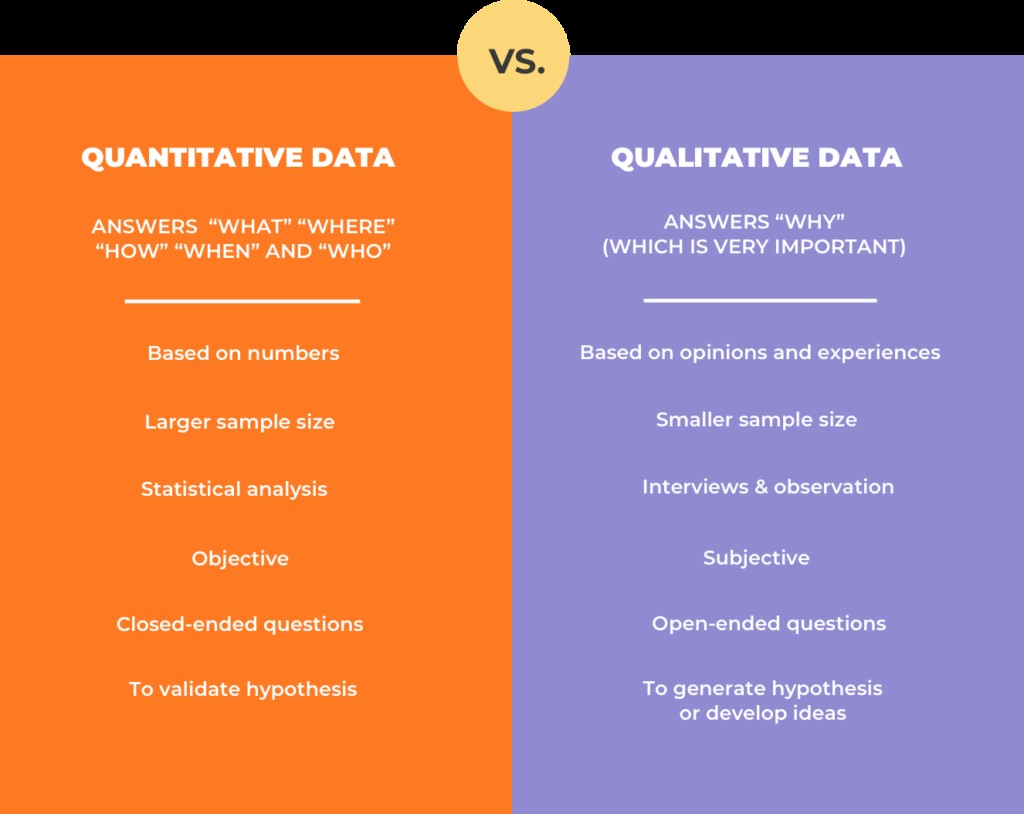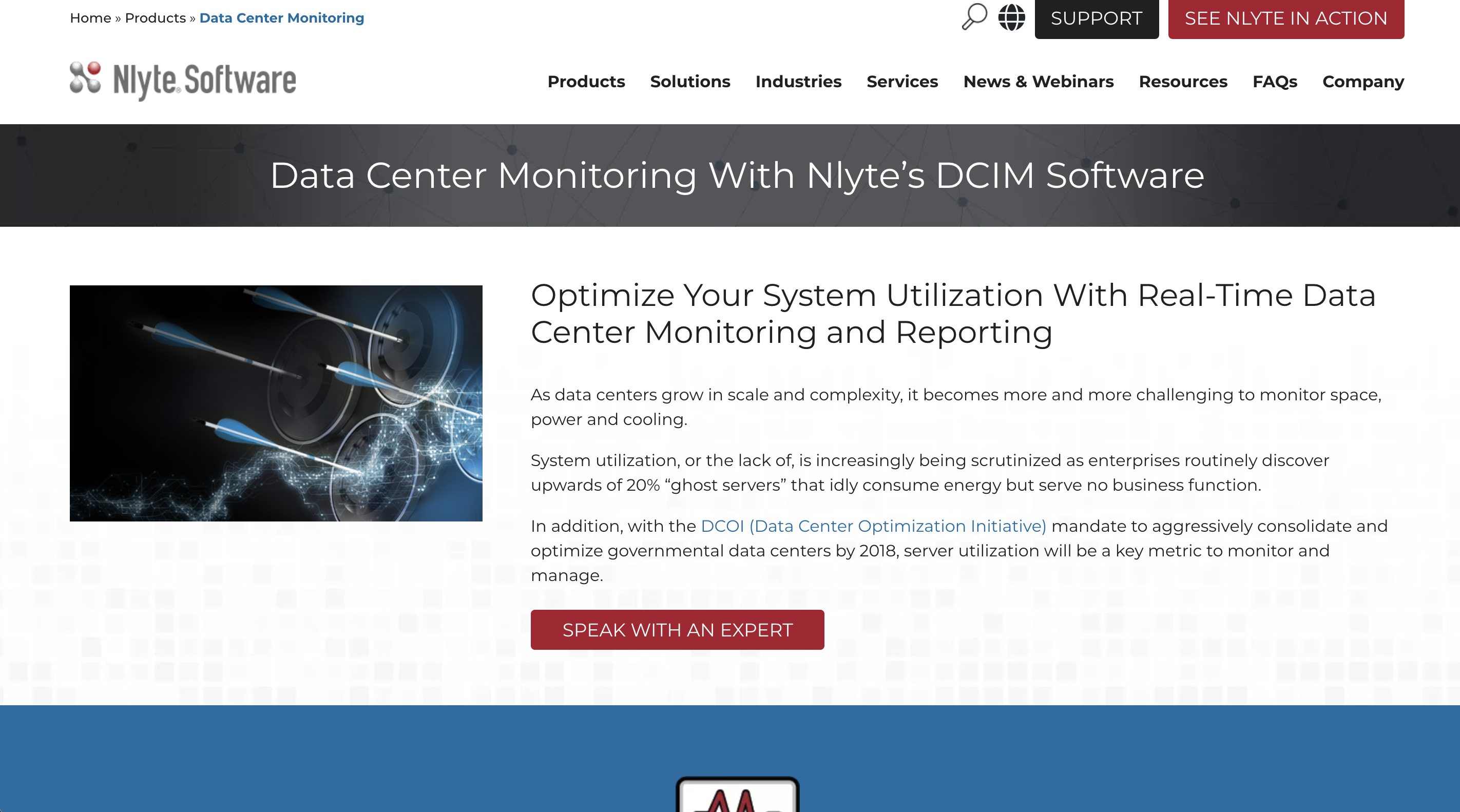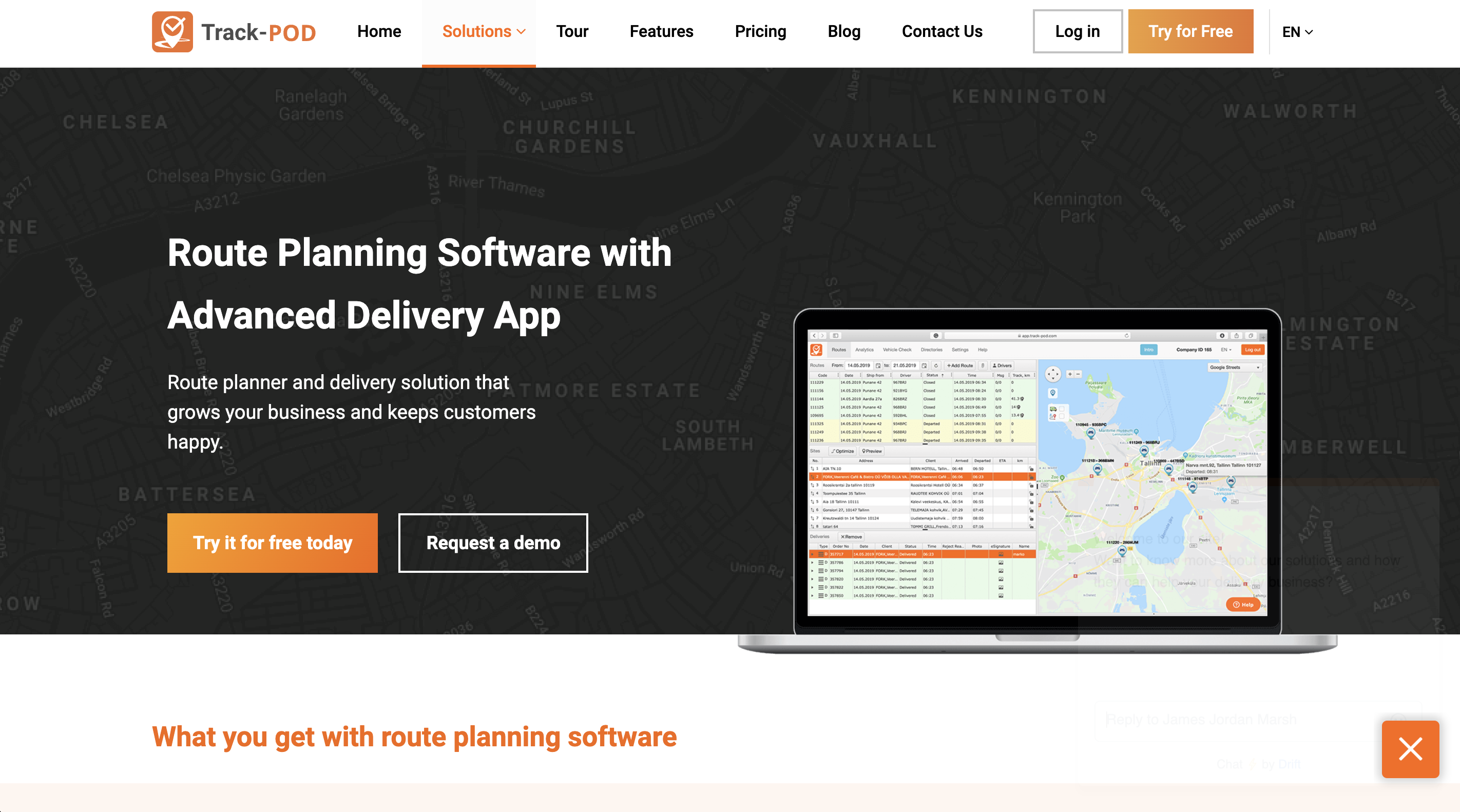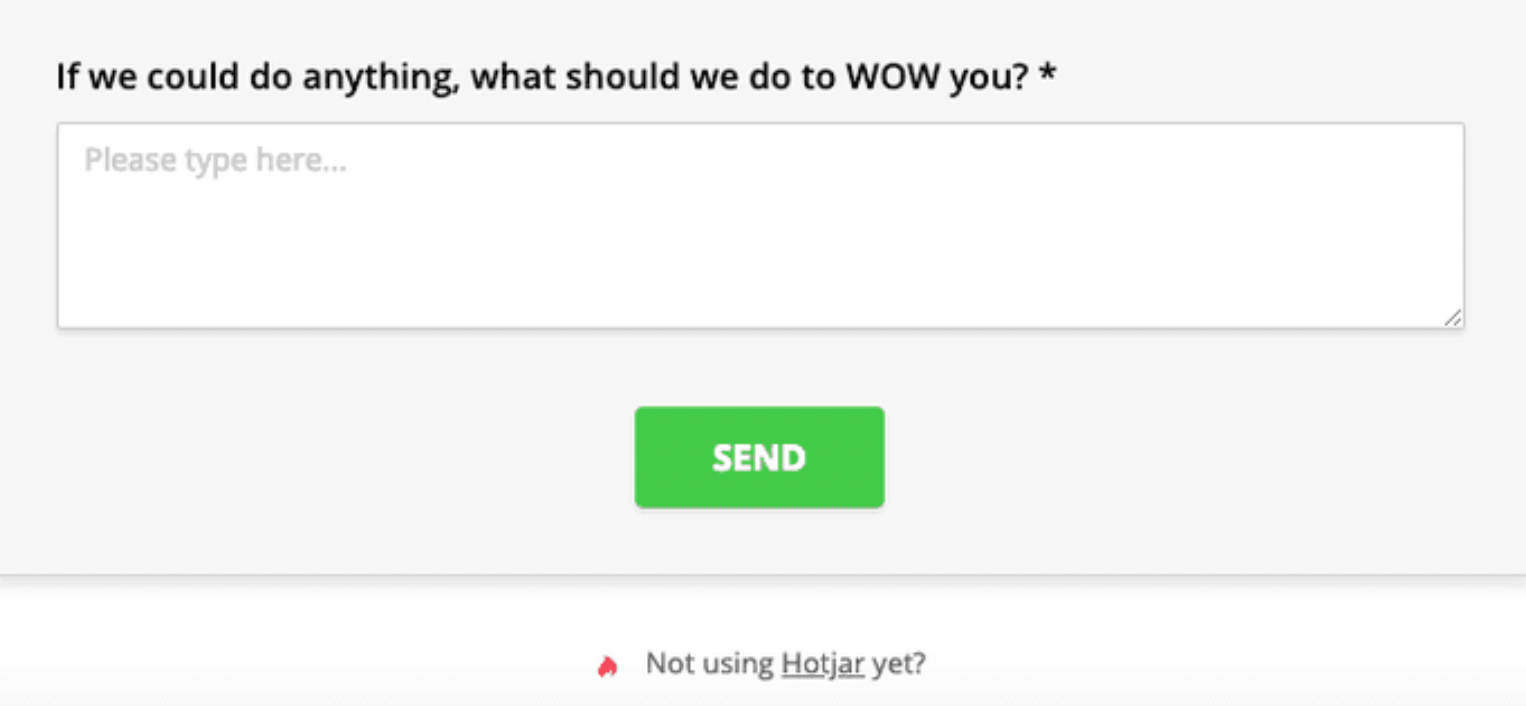Put your growth on autopilot
GrowSurf is modern referral program software that helps product and marketing teams launch an in-product customer referral program in days, not weeks. Start your free trial today.
Keeping your website as user-friendly as possible is important in this day and age.
Why?
Because over 2.14 billion people worldwide are buying goods and services online — not to mention, online consumers have high expectations. They expect a smooth and personalized experience.
If they don’t get what they’re looking for, they have no problem looking elsewhere. In fact, 44% of consumers would abandon a brand if they couldn’t find the information they needed.
Simply put, if your site isn’t optimized, you risk losing business.
So how can you make your SaaS landing page as optimized as possible?
One of the best ways to start the optimization process is to do customer research. And more specifically, qualitative customer research. After all, without input from your customers, how can you expect to optimize your site effectively?
In this article, we’re looking at qualitative customer research that can help you optimize your SaaS landing pages and increase your chances of getting conversions.
Before we get into the thick of it, let’s clarify what qualitative customer research means.
Qualitative customer research involves asking detailed, open-ended questions to your consumers. The research itself usually takes place in focus groups or in-person interviews. Because of this, it usually consists of a smaller group of respondents.
It can also be done with an online survey, as long as the questions aren’t closed.
Let’s look at a couple of examples and how they compare with quantitative questions:
| Qualitative | Quantitative |
|---|---|
| What are your first impressions of this landing page? | Is this landing page user-friendly? |
| What are your thoughts on the call-to-action for this landing page? | Would you like to change the call-to-action on this page? |
| What would you improve on this landing page? | Is there anything you’d improve on this landing page? |
You can see from these examples that the qualitative question is open-ended. The quantitative question can be answered with a simple yes or no.
Here’s a little bit more information about the key differences between qualitative and quantitative:

Image Source: CGS
Unlike quantitative research, qualitative research allows respondents to provide much more detail in their answers. It prompts a thoughtful response that requires some level of detail from the recipient.
Now that we’ve covered what qualitative research is let’s outline how it can help you optimize your SaaS landing page.
Qualitative research is personal. It gives you insight into the thoughts and feelings of your consumers, much more so than you’d get from quantitative research.
As a result, you have a better understanding of who your customers are and what they want from your website.
This is a solid starting point for optimization. If you know what your customers are thinking and why they’re behaving a certain way, you can make sure your site is tailored to their needs. They get a better online experience, and you get a higher chance of making a sale.
Within your target market, you have different demographics. By using qualitative research, you can figure out what these demographics are and segment your audience accordingly.
For example, you might be targeting women between the ages of 18 and 35. Women between 18 and 25 might want a different online experience from those aged 26-35.
Qualitative research is a great way to find this information. But what does this have to do with optimizing your landing page?
Audience segmentation allows you to personalize the online experience for your audience. Based on their interests, age, location, and whatever other information you’ve collected, you can create a unique and tailored landing page for potential customers.
What consumers want can change the way your entire marketplace operates. If you’re not asking them for input and direction, you might miss valuable time-sensitive information that’ll help you optimize your website effectively.
This is where qualitative research can help. By talking to your consumers, you can make sure that your landing page is up-to-date with the latest consumer trends. This will also make sure you don’t fall behind your competitors, which is a bonus.
Sign up for a free trial of GrowSurf to lower your customer acquisition costs, increase customer loyalty, and save gobs of time.

By now, you’re probably wondering how you can run your own qualitative customer research. Well, you’re in luck.
Keep reading to find out how to conduct qualitative customer research in five simple steps.
Before you do anything else, you need to know what you’re trying to achieve. Without this information, your research could lack direction. This could leave you with a lot of consumer information but not much to use it for.
Carefully outline what your goals are for research in the first place. This will give you the direction you need to execute the research successfully and keep the entire process on track.
Make sure to also be specific about areas of your landing page that you want to know more about.
Take a look at this data center monitoring page as an example:

Image Source: Nlyte
While the business’s goal might be to find areas of improvement on its landing page, it might have a specific goal to find out more about its call-to-action.
So think about what your overall goals are as well as the goals you have for specific parts of your landing page. This will make sure you get all the information you need from participants during the research.
Once you’ve firmed up your goals, you can start to get into more detail and draft your questions.
Use your goals as your foundation to create questions. When you’ve finished writing them, review them in line with your goals to make sure you’ve covered everything you want to find out from the research.
If writing qualitative questions is new to you, here are a few examples:
Ultimately, consumers can't answer the question with a yes or no. Try to entice as much information out of the recipient as possible.
With qualitative research, it’s worth noting that you might find consumers take you down a route you hadn’t planned to discuss. This isn’t a bad thing. It could show you some areas of improvement that you hadn’t previously considered.
Let’s use an example to show what we mean.
Track-POD is a SaaS company that provides customers with a route planner. Its landing page is optimized with icons, tables, forms, and a chatbot. It also offers a free trial of its product with a clear call to action.

Image Source: Track-POD
If Track-POD had gone into this research with a set of specific questions tailored around its chatbot, for example, it might never have received feedback about any of the other elements on its site.
Although you’ll have your questions written up, don’t let them limit the experience. Let consumers take the lead if they want to.
Qualitative research can be done in more than one way. It’s up to you to figure out which option is best in line with your resources, capacity, and goals.
Let’s take a look at what options are available and when it’s best to use them.
In-person focus groups
In-person focus groups are a great way to have a conversation with a group of consumers at the same time. They usually consist of up to 12 people at a time, plus the interviewer.
If you want to gather a small group of consumers for feedback at the same time, this is the perfect option. People can share their thoughts and piggyback off other suggestions to give you insightful and constructive feedback.
There are some drawbacks to consider.
Not all group members will be as talkative as each other. You might have to coax information out of some participants to make sure everyone has a chance to say their part.
In some cases, being face-to-face with an interviewer can put some people off being 100% honest. This can skew the entire research process, so you need to consider this if you opt for this method. You might want to consider using an external market researcher, but bear in mind the additional costs associated with this.
One-to-one interviews
As the name suggests, a one-to-one interview consists of a single consumer with the interviewer. It’s a much more intimate setting than focus groups, which can be a good thing or a bad thing.
With a one-to-one interview, chances are you’ll get a deeper insight into consumers’ thoughts and opinions. There won’t be other people chipping in and distracting their train of thought.
On the flip side, you have the same issue as focus groups whereby the interviewee might not be comfortable being 100% honest. Again, you’ll need to think about the value of getting an external party to conduct the interviews.
This method will also take a lot longer than a focus group, so you’ll need to factor time into account if you choose to do individual interviews.
Online surveys
Online surveys are typically used for quantitative research, but they can be used for qualitative responses if used correctly.
As we’ve already discussed, questions should be open-ended to allow for a detailed response. When it comes to formatting, the survey should feature text boxes for respondents to give their answers:

Image Source: HotJar
Most online surveys do have closed questions. They’re easy for people to answer and allow for a quick response time. If you're using Hubspot as your CRM, try integrating it with Hubspot surveys.
For this reason, it makes sense to avoid online surveys for qualitative purposes unless it’s necessary. You’ll get much better data and feedback from in-person discussions.
The research is over. You’ve collected all the feedback from your customers. Now, it’s time to put that feedback into action.
Here’s where you begin:
Once you’ve analyzed this information, you can put it into practice and optimize your site.
These optimizations will vary from business to business. It could be something as simple as changing your banner image to redesigning your entire landing page and focusing on website migration.
Whatever they are, make sure to create an optimization plan that will give you an outline of what optimizations need to happen and when. This will help you track the process and monitor when changes are made.
When everything is live, we’d suggest having trackable measures in place to see how the optimizations perform. It’s an ongoing process, so you might have to make corrections and changes as time goes on.
The feedback you’ve collected from the qualitative research won’t just be useful for your SaaS landing page. Chances are, some of the feedback can be applied to other areas of your business.
Think about your content marketing, for example. Feedback from participants might suggest that the copy on your landing page is too formal. They want something a little more casual and inviting.
This information can feed into your content marketing strategy, making sure that you’re writing content that will appeal to your audience.
This is just one example of how qualitative research can help other areas of your business. To find out what works for you, you’ll need to look at the feedback with the bigger picture in mind. It would be a shame to have all this useful consumer information and not make the most of it.
There are a lot of ways to understand customer needs and behavior when it comes to your website. Using a qualitative approach gives you the depth and insight you simply don’t get with other methods.
Spend some time reviewing the information we’ve outlined in this article to make sure you cover all bases for your customer research. If you do it right, the process will be seamless, and you’ll have a variety of insights that’ll help you optimize your site.
If you’re thinking about other ways you can streamline your processes, take a look at GrowSurf’s strategic referral rewards. Using our platform, you can save yourself time and automate the entire process.
Sign up for a free trial of GrowSurf to lower your customer acquisition costs, increase customer loyalty, and save gobs of time.


GrowSurf is modern referral program software that helps product and marketing teams launch an in-product customer referral program in days, not weeks. Start your free trial today.
Buyer personas are an absolutely critical step for any SaaS strategy. Here are 7 SaaS buyer persona examples to increase your monthly recurring revenue.
Inside a winning SaaS content strategy. In this blog we cover everything you need to know about content brainstorming, scaling production and promotion.
SaaS lead generation can be a tough puzzle to crack, especially on social media. Here's 7 SaaS social media marketing tips to grow your SaaS slowly but surely.
SaaS referral programs are one of the most cost-efficient ways for startups to gain new signups and paying customers. Here's 5 reasons why and examples to study
Your SaaS solution may be the best thing since sliced bread. You know deep in your gut it can make the lives of your target audience significantly better. But if you’re not generating enough leads, chances are your SaaS business won’t stick around for long. So, in this blog post, we’ll take a look into 12 stupidly, simple ways that can help you generate more SaaS leads for your business.